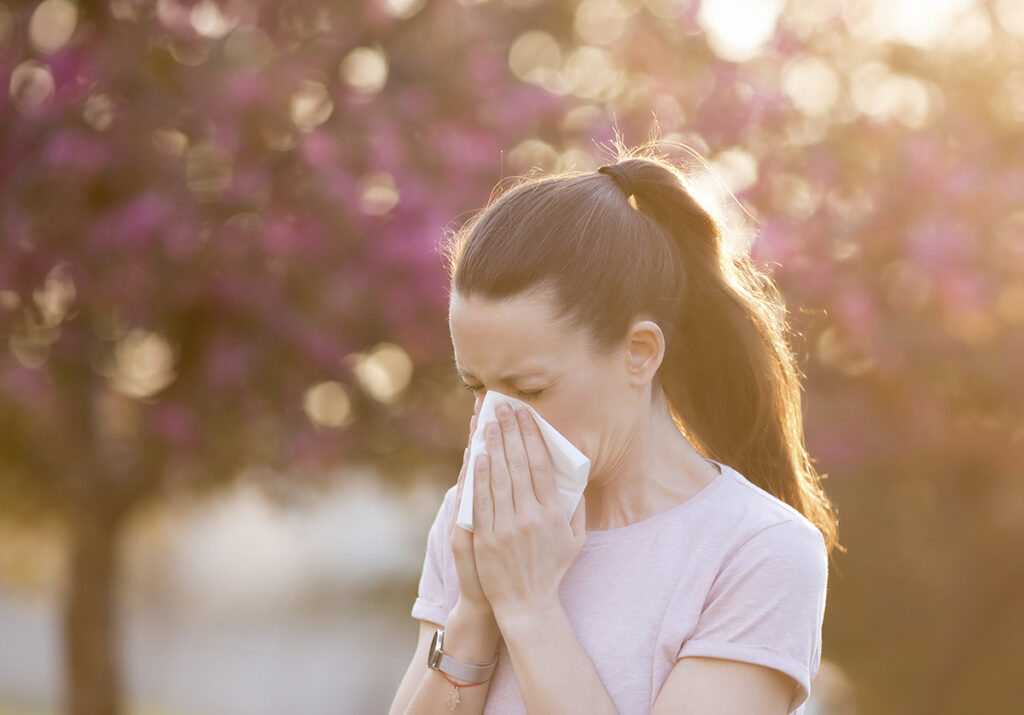Spring is such a beautiful time of the year. For those of you in Texas, you can expect to see bluebonnets and other wildflowers scattered all around, and you can also enjoy nice weather before the summer heat hits. One thing that many people don’t look forward to during this time, however, are the allergies that come with it. Since spring allergy season is upon us, let’s take a look at the causes, symptoms, and how you can find relief.
Causes of Spring Allergies
All the green trees and colorful flowers throughout the city may look beautiful, but they’re also the cause behind your allergies. Pollen allergies, otherwise known as “hay fever,” are most often caused by trees, grasses, and weeds. When they release pollen into the air, it can reach your eyes, nose, and lungs, resulting in the allergies that we hate so much. We should also note that pollen has the ability to travel for miles; this means that just because you don’t have grass or weeds in your front yard, doesn’t mean the allergies can’t affect you.
In Texas, there are many trees that are known for causing allergies, including oak, ash, pecan, elm, and cottonwood trees.
Spring Allergy Symptoms
Spring allergies can start as early as February and last as long as June. There are different factors that will affect how severe your allergy symptoms are, such as your sensitivity to allergens and your exposure to allergens. That said, the main symptoms of allergies in the spring include:
- Sneezing
- Runny nose
- Itchy, swollen eyes
- Stuffy nose
- Scratchy throat
- Coughing
How to Treat Spring Allergies
The most effective way to treat severe allergies is with allergy shots, as they will gradually reduce your immune system’s response to certain allergy triggers. There are also many prescription and over-the-counter medications that can help relieve your symptoms. In order to know which medications you should be taking, you should discuss your symptoms with your doctor so that they can help you come up with a personalized treatment plan.
Aside from medication, there are certain actions that you can take to reduce your exposure to pollen. For example, your at-home habits can have a big impact on your symptoms, so get ready to do some well-needed spring cleaning. You should wash your sheets in hot water once a week, dust and vacuum regularly, replace furnace filters in your HVAC system every couple of months, and keep your windows closed.
If you’re suffering from spring allergies, you’re not alone. If you’re ready to enjoy springtime and stop worrying about getting the same allergies year after year, give us a call at DFW Family Clinic. We’ll gladly help you find a solution that works for you.








